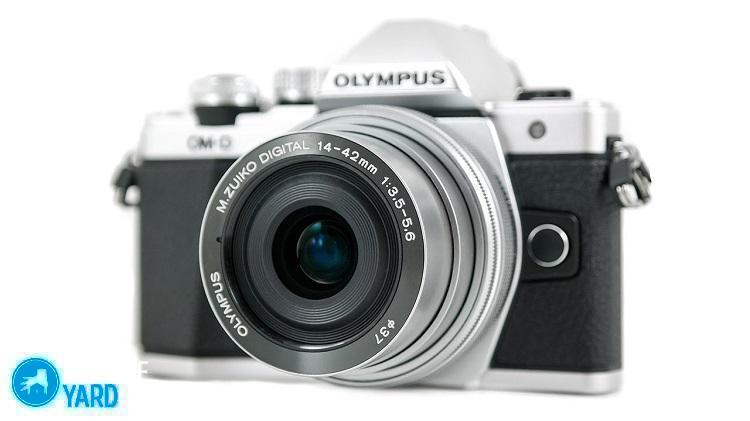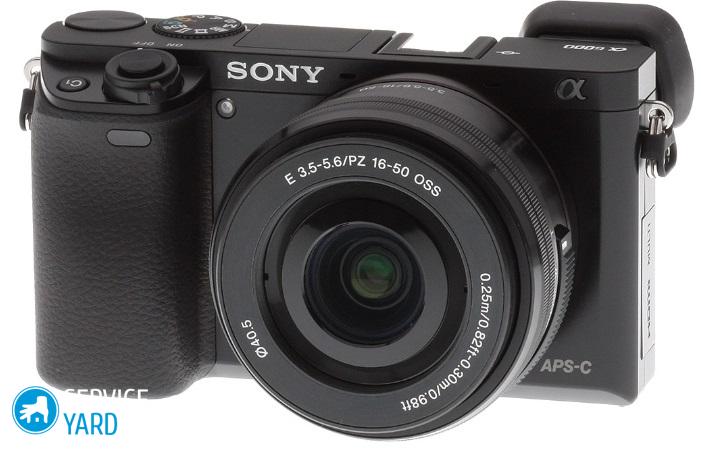System Cameras - Overview and Comparison

Previously, almost every photographer had a bulky SLR camera with several lenses in a case. Progress slightly changed the situation and gave the consumer a small mirrorless. Today's topic: system cameras - review and comparison. Let's find out what it is worth praising them for, and what device is better to choose.
to contents ↑Key Features
Olympus began the “revolution” back in 2009. It was then that the first camera without a mirror system was born - Pen E-p1. For all manufacturers, it was a loud signal for change. Mirrorless cameras have undeniable advantages - small weight and dimensions. These advantages were achieved due to the fact that the system of mirrors, which was very bulky, was removed from the design. This function in gadgets is performed by a sensor and a special connector for working with any lenses from DSLRs.
If you take apart the device, then you can’t find the optical viewfinder. For framing, the display is located on the rear panel. Budget models are generally devoid of a viewfinder, since they are engaged in framing directly on the LCD screen (as on mobile devices or soap dishes).
Well, superficially, we met with the device, why not look at the rating of system cameras now?
to contents ↑TOP 5 best system cameras
In this review, there will be models with removable optics that are extremely close or even superior to SLR cameras.
Olympus PEN E-PL7
Let's start a review and comparison of system cameras with the Olympus brand model, which has always been famous for its quality and wide functionality. At the lowest price here, as always, the maximum functionality. This model has absorbed in its essence the advantages of the best older brothers from the MFT (Micro Four Thirds) line:
- a combination of the qualities of a good touch receiver and a small device;
- impressive functionality;
- Gigantic range of lenses available.
Important! The camera is perfect for amateurs and advanced photographers (as a travel camera).
Specifications are as follows:
- The aforementioned (4: 3) mount.
- The matrix is 16.1 megapixels (17.3x13mm).
- Shooting resolution - 1920x1080p.
- 3-inch touch-screen display that can rotate.
- Wi-Fi module for the Internet.
- The device weighs 465 grams (without a lens).
Disadvantages:
- Dear lenses.
- Flimsy body materials.
Olympus OM-D E-M10 Mark II
Another representative of the company that made the noise. This advanced gadget is the best choice for the photographer, as this model combines quality, functionality and low price.
Important! The level of shooting can “wipe the nose” of some mirror models, and the ability to parameterize the control of shooting only adds enthusiasm for looking at this gadget. It costs 660 dollars.
Characteristics:
- MFT standard.
- Matrix parameters: 17.2 megapixels (17.3x13mm).
- Captures video in Full HD resolution.
- Equipped with a small (3 inch) touch screen and Wi-Fi wireless module.
- The camera weighs exactly 390 grams, not including the lens.
Disadvantages:
- The only significant minus is the low battery capacity.

Sony Alpha ILCE-6000
The rating of system cameras is continued by a truly fast model - Sony a6000. The functionality of this small device is enough for the vast majority of photography enthusiasts. In the case of one device combined:
- ergonomics, quality of hybrid autofocus;
- high-speed CPU (processor);
- modern 24-megapixel APS-C sensor;
- “ISO” up to 25600 and a shooting speed of 11 frames per second.
Important! The list can be continued endlessly, since it has tracking autofocus, an electronic viewfinder, and many other interesting devices. All this functionality will cost $ 750.
Highlight worth:
- Type E bayonet mount from Sony.
- 25 MP APS-C matrix.
- Shooting video in maximum resolution.
- Screen with a rotational function of 3 inches.
- Wireless module.
- Weight 460 grams excluding the lens.
Disadvantages:
- The lack of a touch screen.
- Difficulty in managing menu functions.
Important! In order for the costs of equipment and its functionality to meet your expectations, you need to really evaluate your skills and capabilities. Therefore, we also recommend that you familiarize yourself with useful tips on how to choose a good semi-professional camera.

Sony Alpha ILCE-5100
A very interesting model with extremely convenient controls and all the attributes that are so in demand among amateur photographers.
Important! This camera without mirrors has the characteristics of professional equipment and does not have worthy competitors in its price category. The camera is well-balanced and a great choice for those who like to take family photos.
If you have not yet fully decided which type of equipment will be more convenient for you to use, our final help will finally figure out the details and make the right decision. overview of differences between SLR and digital cameras.
The technical data for this device is as follows:
- Type E bayonet mount from Sony.
- 24 MP - matrix on APS-C technology.
- Captures video in a resolution of 1920 × 1080 pixels.
- Sony 5100 is equipped with a touch screen that can rotate.
- The camera has a module for wireless Internet connection.
- The camera weighs 283 grams, excluding lenses.
Disadvantages:
- The battery charge lasts a maximum of one hour.
- There is no microphone input.
- The assembly materials are not of the highest quality, which is why the device is extremely fragile.

Panasonic Lumix DMC-GM1
Rating mirrorless cameras with interchangeable lenses will close an interesting model from the company Panasonic, which for many, many years has been famous for its high reputation and popularity. They have a wonderful compact product with a very wide functionality - “Lumix GM1”.
Important! This device is best suited to those enthusiasts who are accustomed to photographing everything on a fully automatic machine or picking up full control over all known parameters. This gadget is perfect for home, and for individual use, and even for shooting on long trips.
Technical characteristics of this model:
- MFT technology.
- Matrix (17.3x13mm) at sixteen megapixels.
- Takes a device in full resolution “Full Eychdi”.
- Three-inch static touch screen will help to cope with management.
- The synchronization will be carried out by the Wi-Fi network module.
- The weight of the device is extremely small - 204 g without a lens.
Disadvantages:
- It takes a long time to get used to the controls of the device.
- A regular lens does not have a ring with manual focus.
Also read about no less worthy Canon or Nikon cameras.
to contents ↑Stock footage
Today you saw the five best system cameras according to independent user polls on popular online forums. In the end, it’s up to you to judge the participants, so soberly prioritize and buy the device that you don’t want to let go.






